Cell division and cell cycle- from one to billion
Last time we reviewed Eukaryotic cells (Eukarya- what are we made of) and before we move to individual human systems I want to explain some basic aspects of cell division and cell cycle. All multicellular organisms begin as one cell all other cells originate from this one. Cell cycle is one of the most regulated process in organisms because once the cell starts to divide uncontrollably probability of cancer development significantly rises. Our body has few mechanisms to defend against these abnormal cells but they are not able to destroy all of them. The mechanisms are very complicated and not yet fully understood. There are interesting evolutionary theories about cancer and these mechanisms that body develops against it, but about them maybe later.
Cell cycle
During cell cycle one mother cell divides into two daughter cells. Cell cycle consists of many individual phases two main are interphase, in which the cell grows and DNA is replicated, and M-phase, in M-phase DNA is distributed and the cell divides. Cells are controlled at checkpoints, if abnormal cell is revealed it is ordered to kill it self immediately but not all cells are caught.

Interphase is time between two cell divisions it has three phases.
G1: cell is growing to its normal size, in this phase cell full fills its main function and synthetases membranes and organelles, here is the first checkpoint controlling if the cell is even going to divide
S-phase: if cell decides to divide firstly the DNA must be replicated, DNA later condensate into individual chromosomes formed by two copies of the DNA (sister chromatids) connected by kinetochore, both cells must contain copy of each chromosome
G2: cell is growing and preparing for division, in this phase everything that occurred in interphase is controlled and checked, if everything is as it should be cell can move to M-phase and divide
At the end of interphase centriole (cytoskeletal organizing center, MTOC- microtubules organizing center) copies it self and cytoskeletal filament mostly microtubules are formed.
M-phase
There are two types of cell division mitosis and meiosis. All cells in multicellular organisms divide through mitosis only the reproductive cells, sperm cells and egg cells, divide through meiosis. Our cells have two copy of every homolog (same) chromosome one copy from mother and the other from father so our cells are diploid 2n. During mitosis all chromosome replicate so for while cell is tetraploid 4n and two daughter cells are formed. Each cell gets copy of every chromosome so the cell is again diploid 2n. But when the reproductive cells fuse, to create new individual during fertilization, the individual must be diploid 2n so haploid cells 1n must fuse to create this individual. They are created by meiosis, at first two daughter cells, one with only maternal other with only paternal chromosomes, are formed and these then divide into four haploid 1n cells (gametes- sperm and egg cells). Very important process called crossing-over occurs during meiosis before the first division. Two homolog chromosomes (from mother and father) pair and exchange some equivalent parts of their DNA code. This way the offspring will be genetically diverse from its parents, this is very important for genetics and evolution.

Mitosis has six phases.
1.Prophase: chromosomes condense, two copies of each chromosome the sister chromatids are connected by kinetochore, nuclear membrane is beginning to dissolve
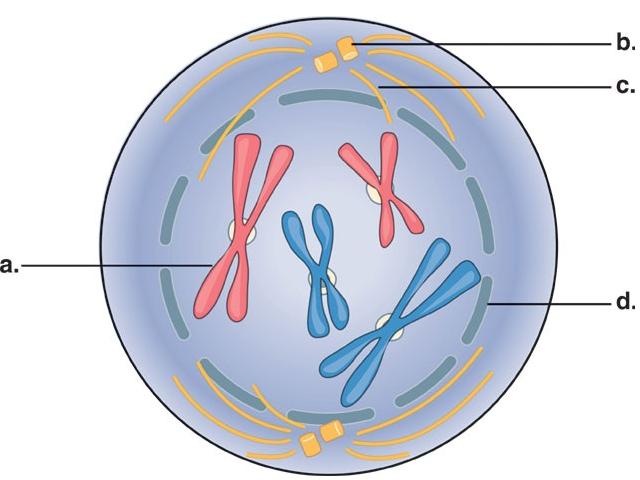
2.Prometaphase: nuclear membrane dissolves, microtubules from both centrioles connects to the kinetochore of the individual sister chromatids, one of the sister chromatids is always connected to different centriole then the other so that both daughter cells have copy of each chromosome
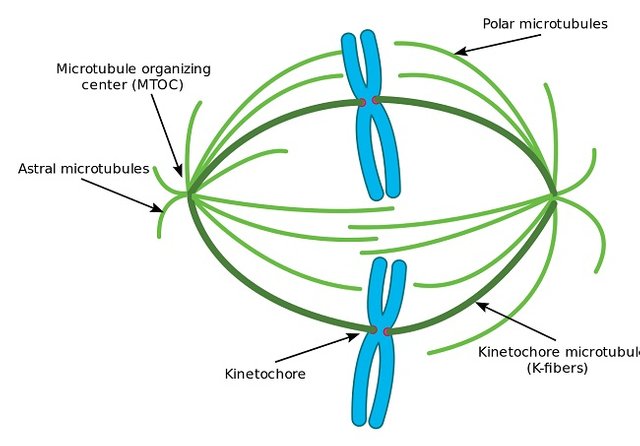
3.Metaphase: chromosomes align in equator of the cell
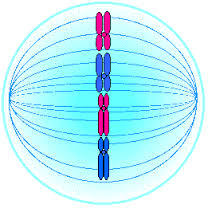
4.Anaphase: microtubules begin to pull the sister chromatids away from each other, after the chromatids separate both are slowly pulled toward their centriole
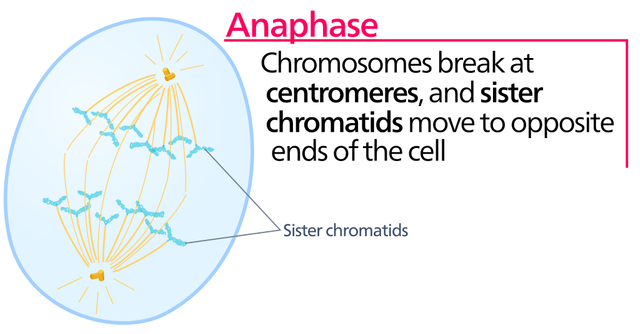
5:Telophase: when the chromatids reach their destination on opposite sides of the cell new nuclear membrane is begging to form and special cytoskeletal filament called contractile ring from actin and myosin form around the cell
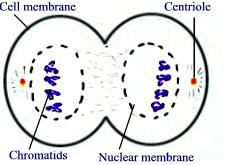
6.Cytokinesis: contractile ring cleaves the mother cell into two daughter cells, each cell has its own nucleus with formed nuclear membrane formed from formal parental nuclear membrane

Meiosis
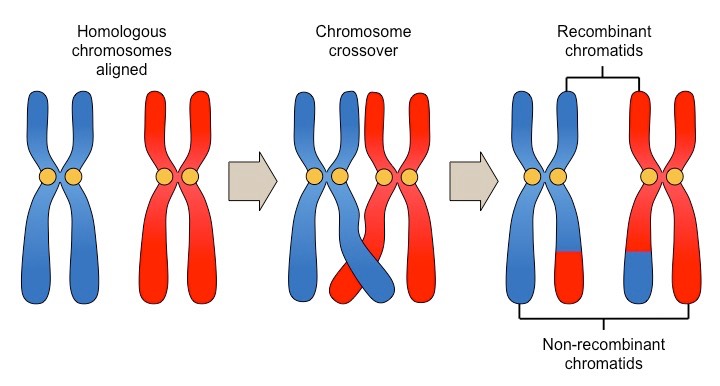
When nuclear membrane dissolves microtubules connect to kinetochore, both sister chromatids of maternal and paternal chromosomes are connected by such power in kinetochore that they act like one complex, therefore during first meiosis division only the two homolog chromosomes are separated and two daughter cells are formed one with only the paternal sister chromatids and other with maternal sister chromatids. During second meiosis division no replication occurs the two daughter cells only divide to each form new two daughter cells, so four cells in total, with only one copy of either the parental or maternal chromosome, these cells are haploid 1n, they fuse to form a new diploid 2n individual.
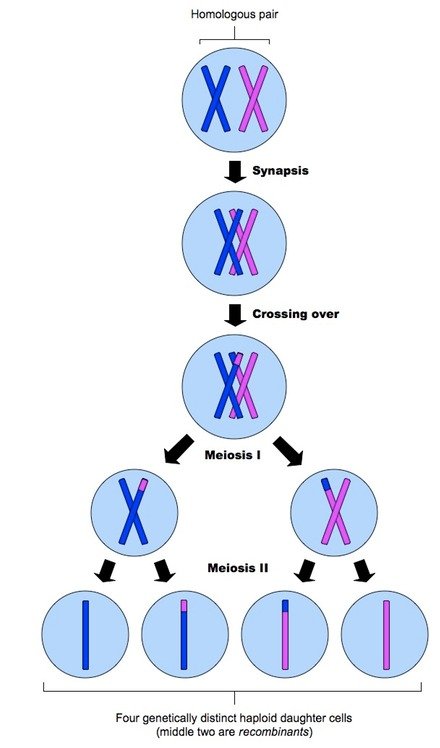
Next: Human respiratory system
Image sources:
https://www.studyblue.com/notes/note/n/11-cell-cycle/deck/12636531
http://medicalpicturesinfo.com/prophase/
https://biologydictionary.net/prometaphase/
http://www.syvum.com/cgi/online/serve.cgi/squizzes/biology/mitosis.html?question_hide
http://www.tutorvista.com/biology/cytokinesis-pictures
http://www.yourgenome.org/facts/what-is-mitosis
http://www.vce.bioninja.com.au/aos-3-heredity/cell-reproduction/meiosis.html
Congratulations! This post has been upvoted from the communal account, @minnowsupport, by fingers from the Minnow Support Project. It's a witness project run by aggroed, ausbitbank, teamsteem, theprophet0, and someguy123. The goal is to help Steemit grow by supporting Minnows and creating a social network. Please find us in the Peace, Abundance, and Liberty Network (PALnet) Discord Channel. It's a completely public and open space to all members of the Steemit community who voluntarily choose to be there.
If you like what we're doing please upvote this comment so we can continue to build the community account that's supporting all members.
Thank you very much I really appreciate it. What you are doing is great and it is helping this awesome community I will do what I can to support you.